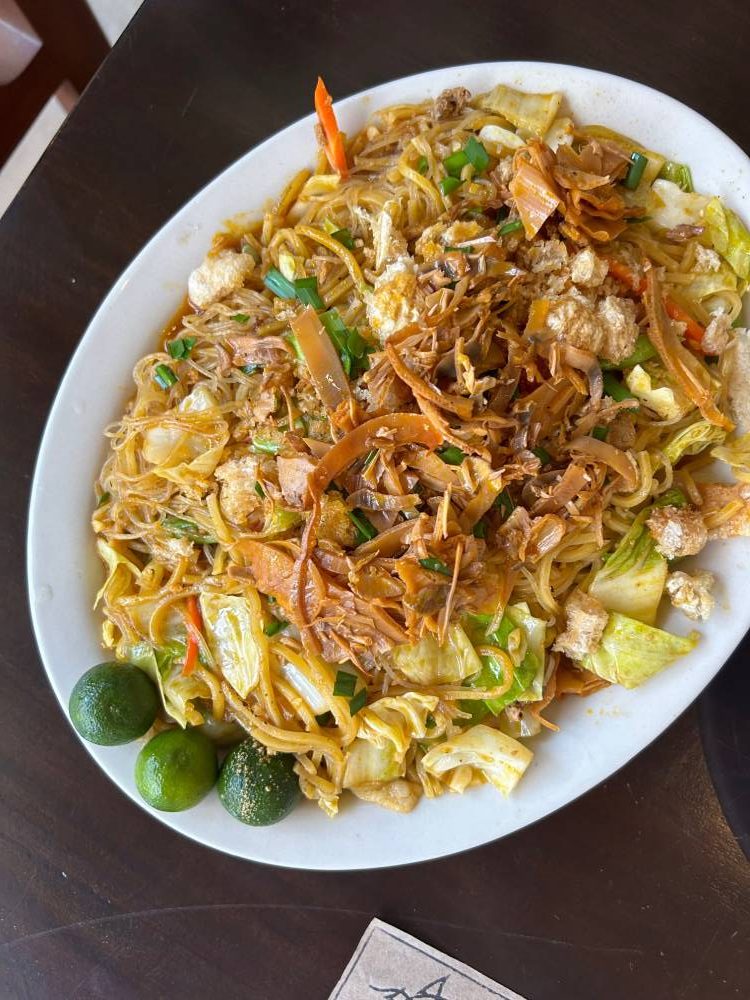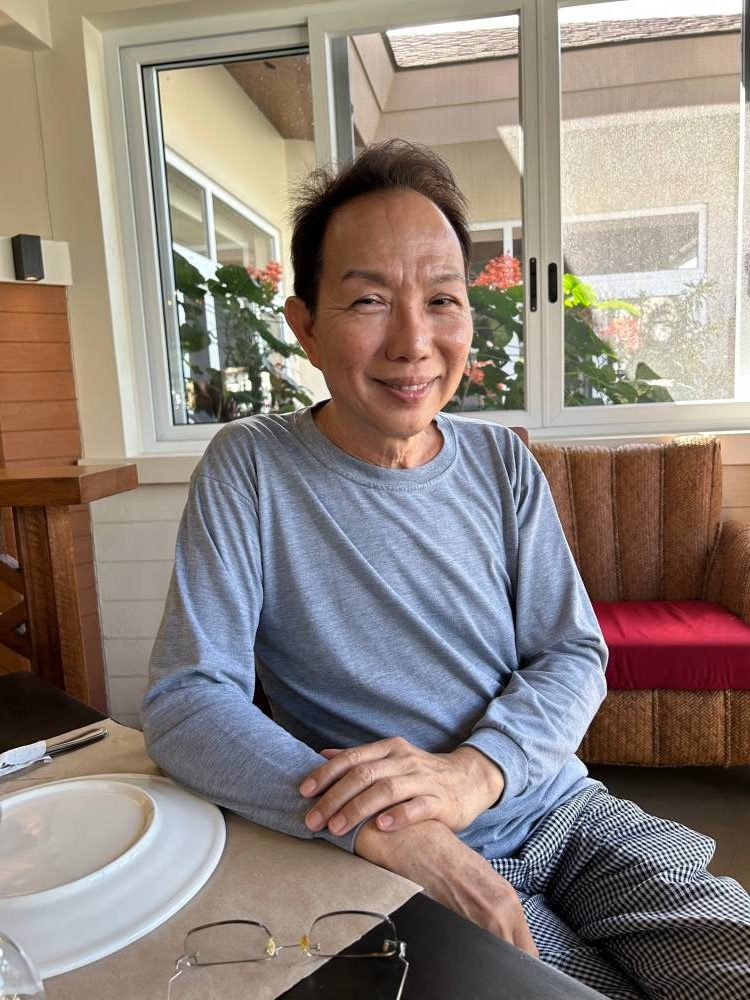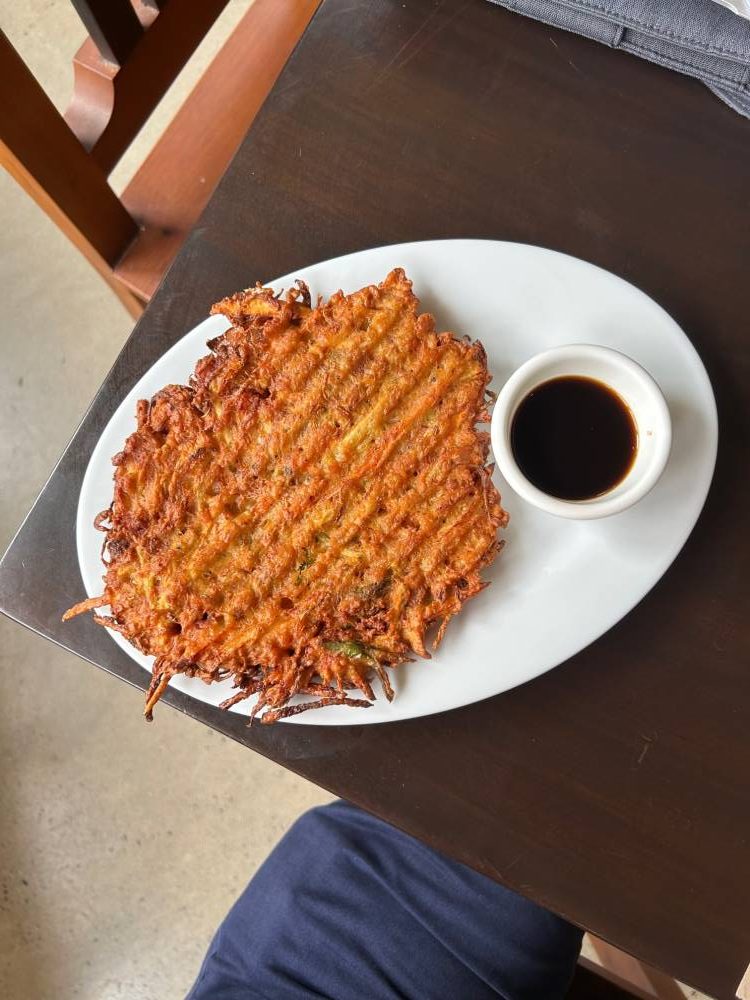From ‘pasahog’ to Cavite landmark

Sonny Lua is a great storyteller. He sets up the scene in detail before launching into historical anecdotes that flaunt his sharp memory. And he tells them in a manner that will really make you stop what you’re doing and listen. I’ve experienced this the three times I visited his restaurant in Cavite. Whenever I find myself in the vicinity, I make sure to drop by and have a heaping order of their pancit pusit and a side of biyak ulo, or what many locals call their okoy, as it incorporates crushed pieces of shrimp heads in the fried veggie patty.
“I was born into this and I have been taking care of it since 1989,” said the 68-year-old owner of Asiong’s Caviteño Restaurant. He recounted a massive fire in December 1959 that engulfed most of Cavite’s commercial area, where Lua’s family lived. “You could see the horizon line,” he recalled. Miraculously, only the Catholic church and their house survived, though they were not spared by looters.
‘Gopes’
Seeking refuge in Rosario town during the chaos, his father, the restaurant’s namesake, returned to their house the following morning to assess the situation. Once it was safe, his Lola Intang, along with Sonny and the other nieces and nephews, returned home to start anew. For their meals, his grandma had to travel to the neighboring town’s wet market, and most of the time, the only thing left available to buy were innards.

Using three large stones and wood scraps from the fire, she cooked gopes, also known as bopis, over a campfire by the sidewalk. The aroma of minced pig’s lungs and heart sautéed with aromatics had people nearby pleading for her to cook extra, a practice they called pasahog. Her generosity attracted more customers, prompting the family to consider opening a business. This was how Asiong’s carinderia and café started, growing from a pot of bopis enough to feed their family of five, to 68 different dishes cooked every day, even more on weekends.
“My lola cooked anything that was authentic Caviteño. My mother was great with desserts but was also a mean cook, while my father created a new dish out of excess ingredients, so walang nasasayang sa amin (nothing went to waste),” Lua said. Their adobo back then was masabaw (saucy) since their customers, like budget-conscious students, would order just rice bathed with the sauce as their meal. They offered two varieties: adobo sa pula, and what Lua called the “flirty” variant, which had quail eggs and mushrooms.
Their fried chicken was equally popular, especially to the Americans stationed in the neighborhood. One style was the Tejeros kind, which had no breading and was simply marinated in calamansi, patis and garlic, and another that was breaded and came with gravy. Their ability to cater to customers’ cravings contributed to their success.
Food combinations
And it also helped that the Caviteños had discerning palates and had specific food combinations. Kare-kare was always accompanied by kilawin papaya and adobo—the former to cleanse the palate and the latter to cut the richness of the peanut-based stew. “Kahit maliit ang salary nila, pagkakasyahin nila ‘yan. Hindi pwede kulang. Kapag may nilaga, kailangan may salsa mongha. Kapag may pritong isda, kailangan may ginisang monggo (Even if they had limited income, they never compromised. Their nilaga had to come with salsa mongha. Fried fish was always paired with sauteed monggo.)”

When Lua’s mom, Crisanta Nocon Trias, died in 2000, he took over the restaurant, moved it to Silang as flooding often hindered restaurant operations, and modernized the cooking process. His menu has expanded beyond their carinderia’s offerings to include a variety of pancit, from pancit pusit to puso ng saging; a 1950s-inspired pan de sal called pan de torso, which can be enjoyed with a local cheese called quesillo; Bistek Chabacano, which is peppery and saucy; his lola’s hamonado; tadtarin, their version of sizzling sisig; Dalahican soup, mixed seafood in a tomato broth; Caridad Galantina, their chicken relleno; and Silang’s sapin-sapin. It’s a menu seasoned not just with heirloom recipes from the Lua family, but also items Cavite is quite known for.
I always have a great meal here, enhanced by Lua’s captivating storytelling.
Asiong’s Caviteño Restaurant is at Buenavista Avenue, Bucal, Silang, Cavite; tel. 0926-7139400.
Follow the author @fooddudeph in Instagram.
Angelo Comsti writes the Inquirer Lifestyle column Tall Order. He was editor of F&B Report magazine.


















